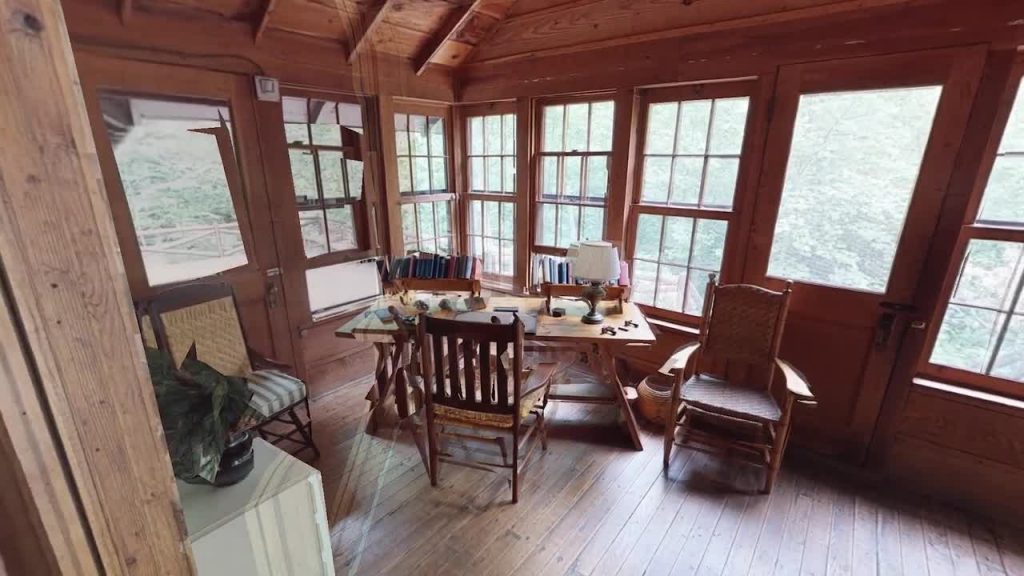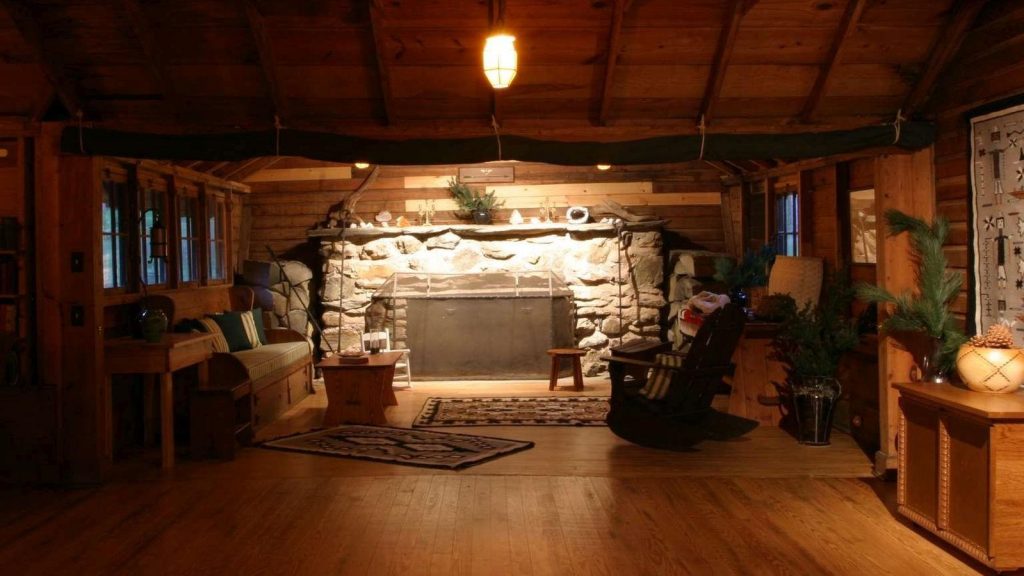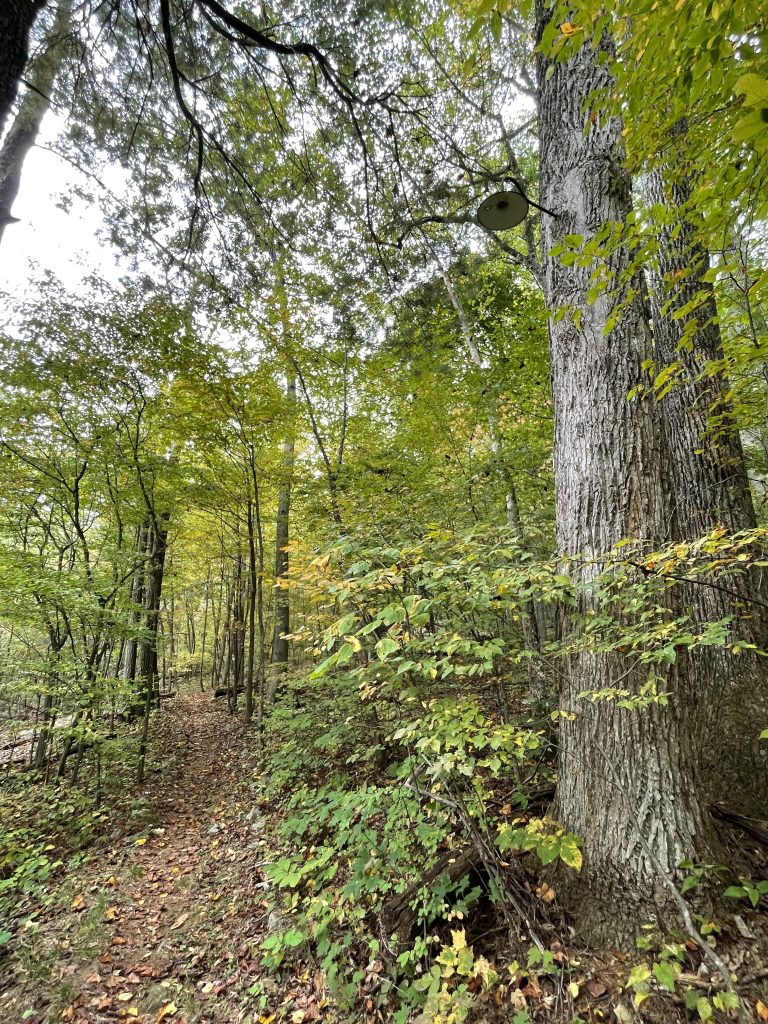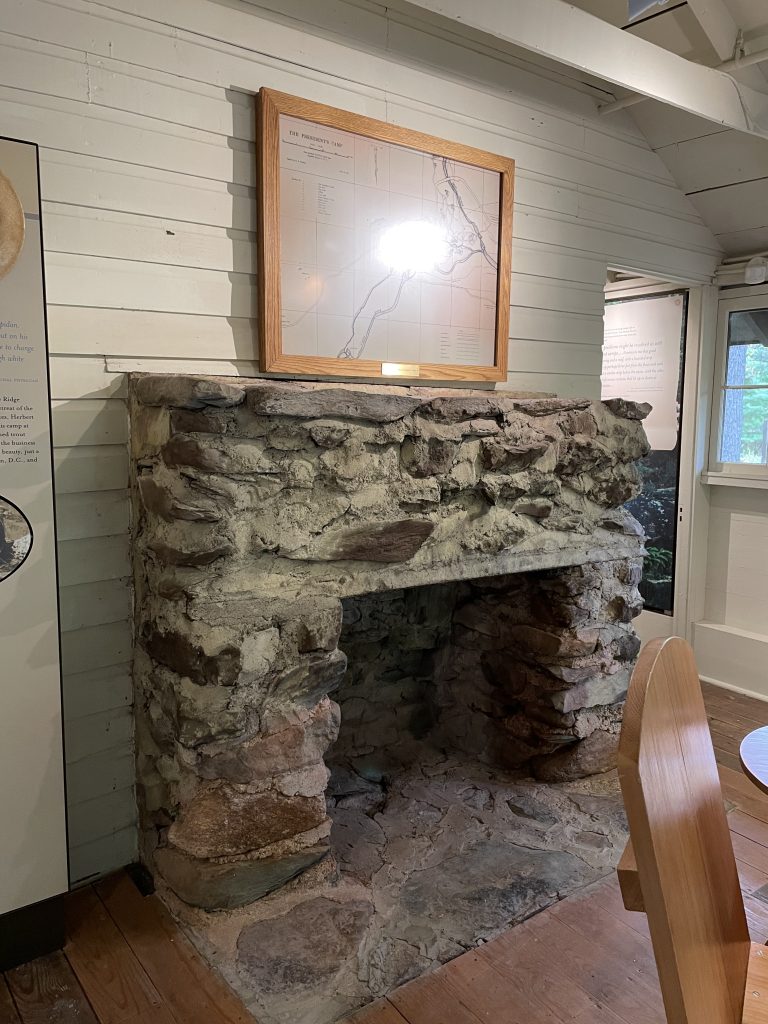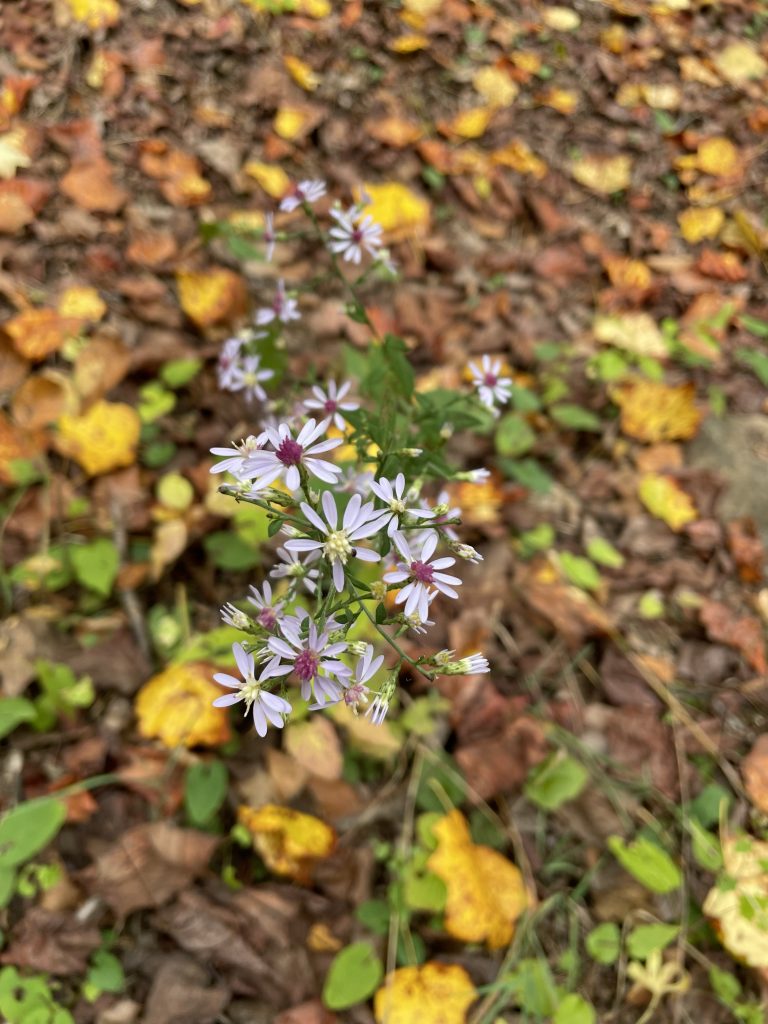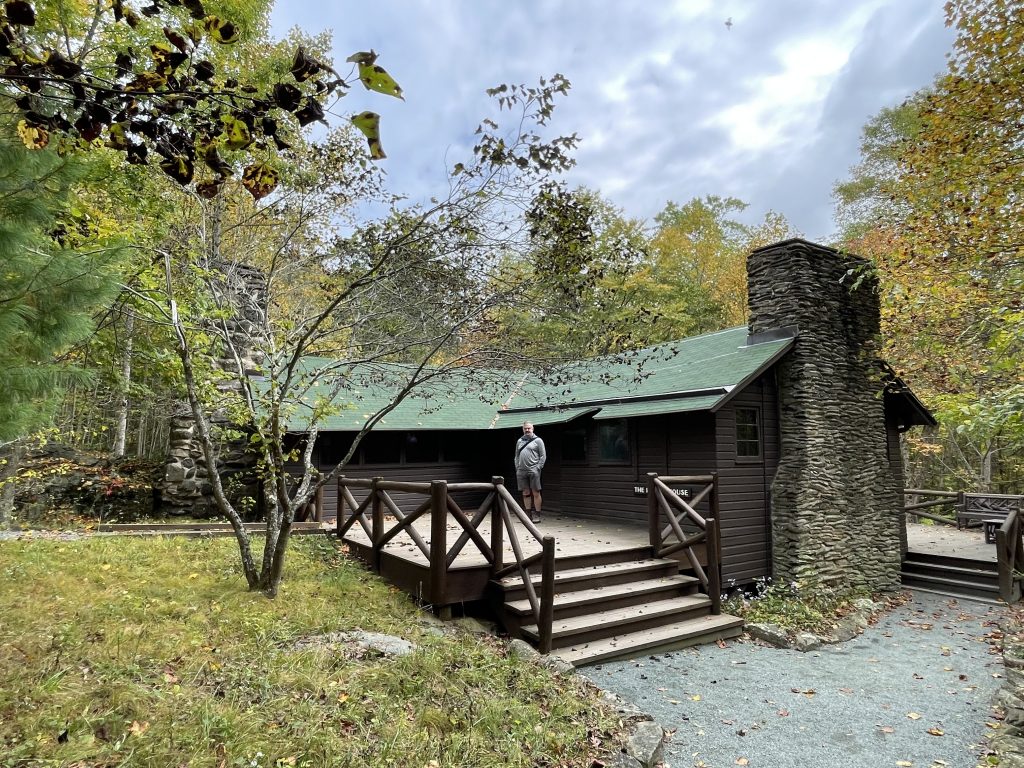Rapidan Camp was the “Camp David” of its day. Later known as Camp Hoover, it was the presidential retreat of U.S. President Herbert Hoover and his wife Lou Henry Hoover.
The Hoovers were looking for an escape from the “pneumatic hammer of public contact” of Washington. Most previous presidents lived in the general vicinity of D.C., but the Hoovers’ home was in California, so getting away for a week or two was no easy task. Thus they began looking for a closer casual getaway.
In their early married life they had truly roughed it, living at mining camps while Hoover served as a mine engineer in remote locations in primitive accommodations. Their requirements for their presidential getaway were simply that it be secluded, be at least 2,500 feet above sea level (to avoid mosquitoes), that it be relatively easy to travel to it from D.C., and, most importantly, that it have a stream for trout fishing.
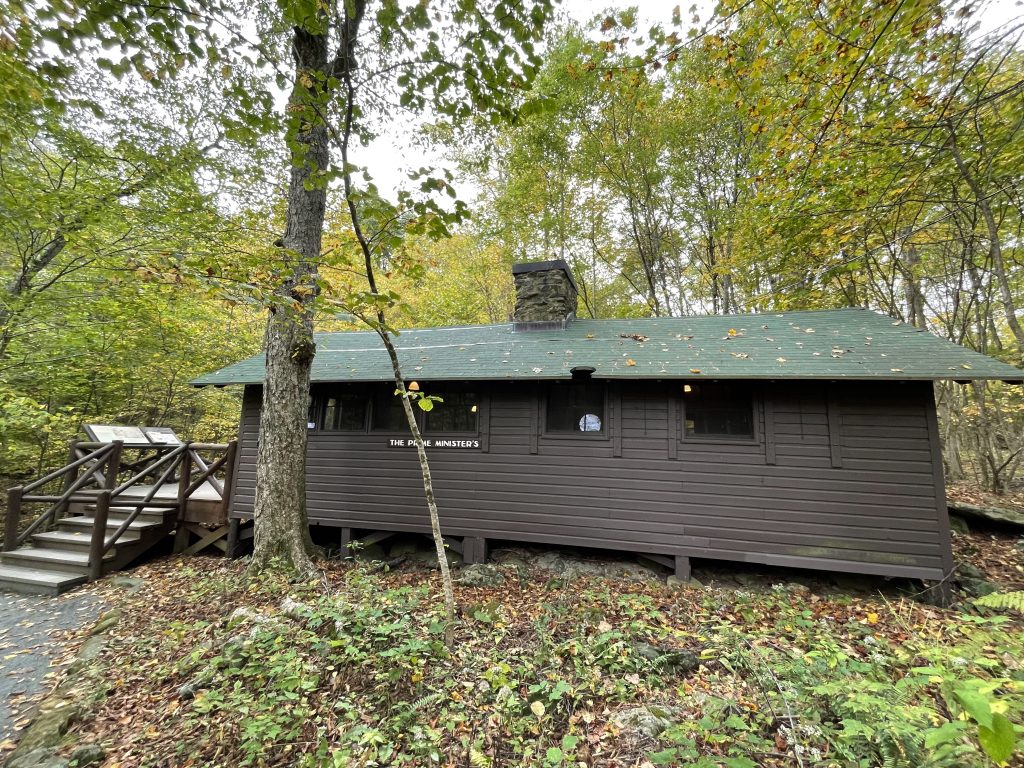
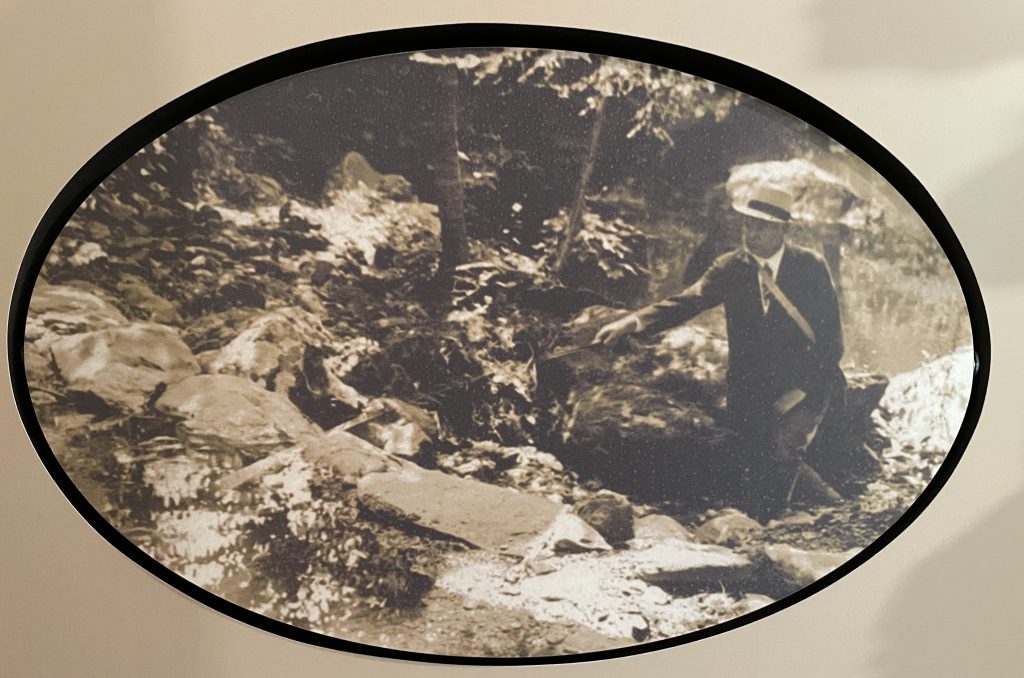
At the same time that the search was underway, Virginia Governor Harry F. Byrd was working to establish Shenandoah National Park. Thus, the Hoovers were invited to establish their camp at the headwaters of the Rapidan River, inside the area of the park. The site was truly remote and undeveloped -– the Hoovers had to ride horses to view the site, as there were no roads.
The Hoovers used their own funds to purchase 164 acres and build their camp, though they were persuaded to use the Marine Corps as labor, calling it a “military training exercise.” Eventually 13 buildings were built as part of the camp, including a lodge, two mess halls, cabins, and a “town hall.” They also constructed several miles of hiking trails.
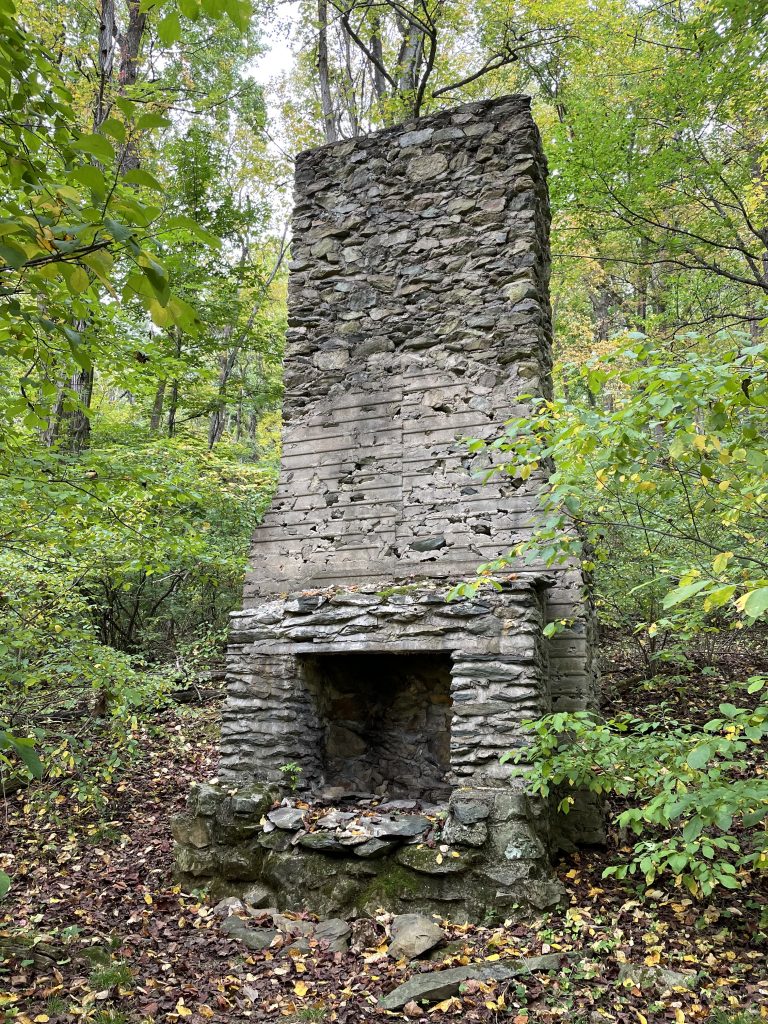
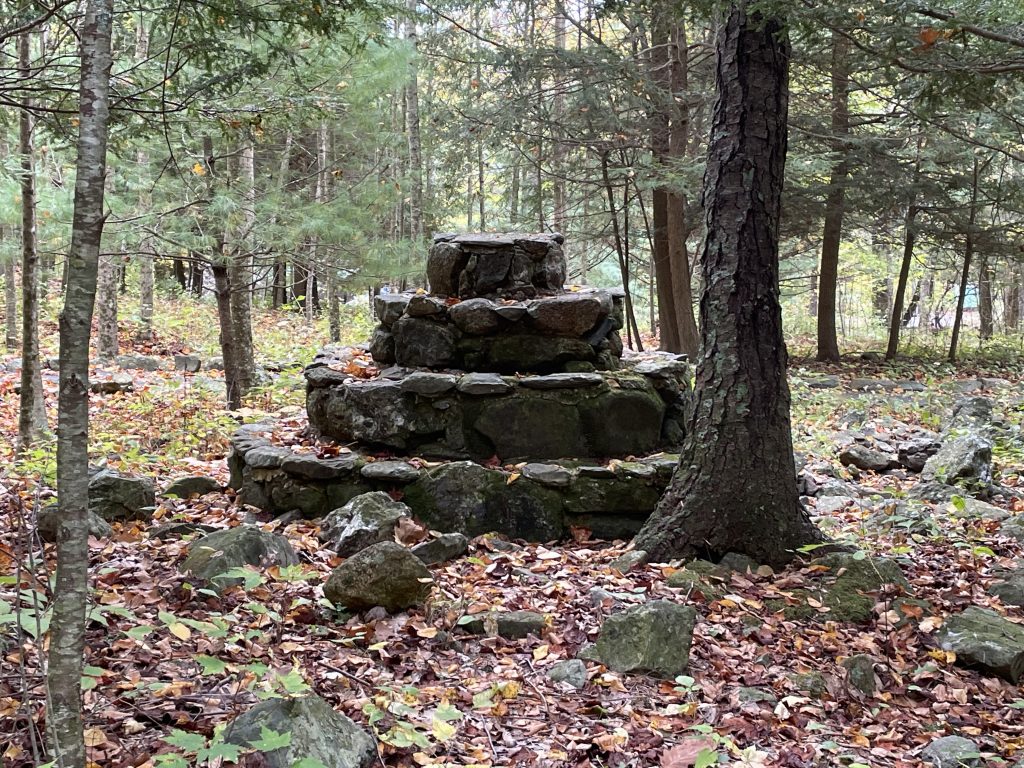
Nearby, a Marine Corp camp was also set up. At times 500 marines served the camp in some capacity, providing security, building roads, assembling furniture, and building the structures onsite.
The Hoovers used the retreat throughout his administration from 1929 to 1933. U.S. and foreign leaders came to work and strategize in the casual environment.
After Hoover left office he offered the camp for use to subsequent presidents and donated the property to the federal government. However, the next presidents was Franklin D. Roosevelt, and he could not navigate the camp in his wheelchair; he established instead the retreat that is now known as Camp David.
Subsequent presidents were not so interested in such a rustic retreat, and the camp fell into disrepair. Eventually buildings needed to be demolished, leaving just three of the original buildings. It wasn’t until 2004 that the park service restored the grounds and remaining structures to the condition of the Hoover presidency.
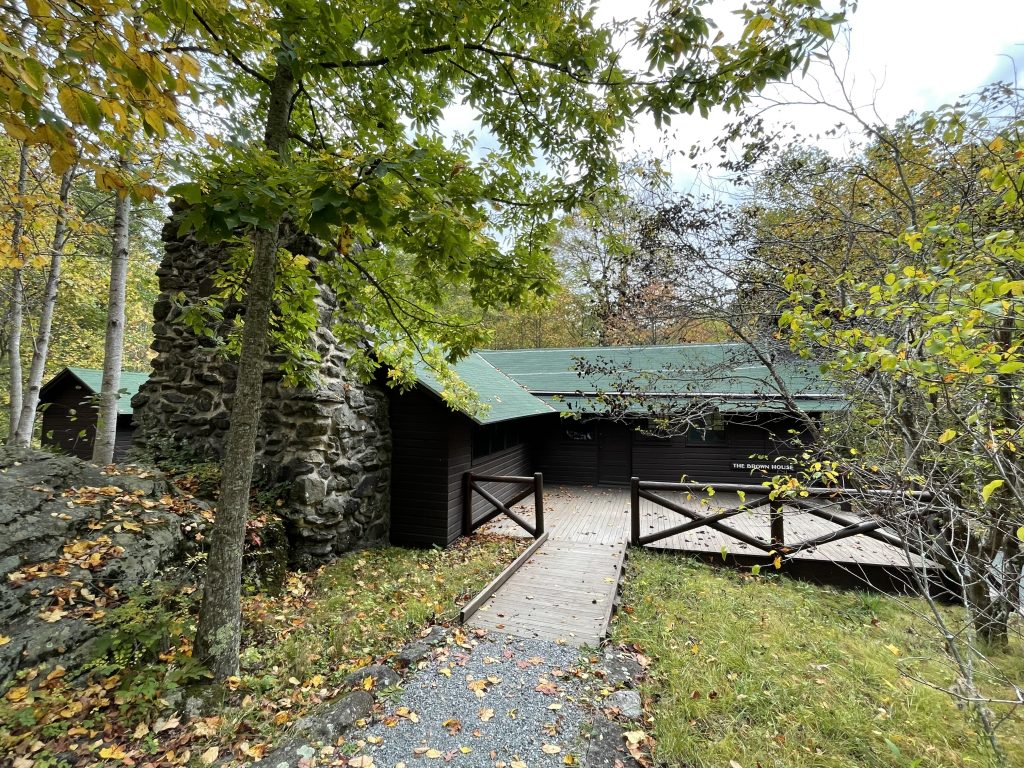
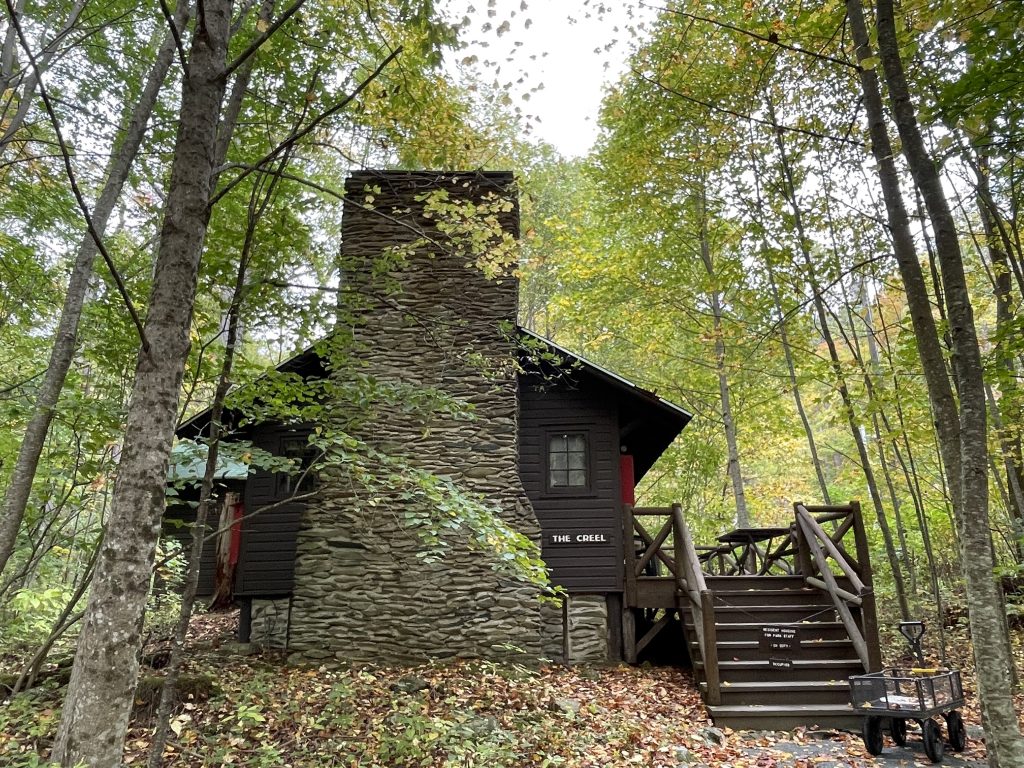
The three buildings still standing are the Brown House (President’s Cabin), the Prime Minister’s Cabin, and the Creel. The Creel is now the residence of park volunteers who maintain the site. The Prime Minister’s Cabin is now a small museum on the Camp. But the Brown House is set up to look like how it would have been when the Hoovers were there.
Even today, accessing the site requires a 30-minute bumpy bus ride from the visitors’ center. For those not inclined to do an official tour, a few miles of hiking can get you to the site.
